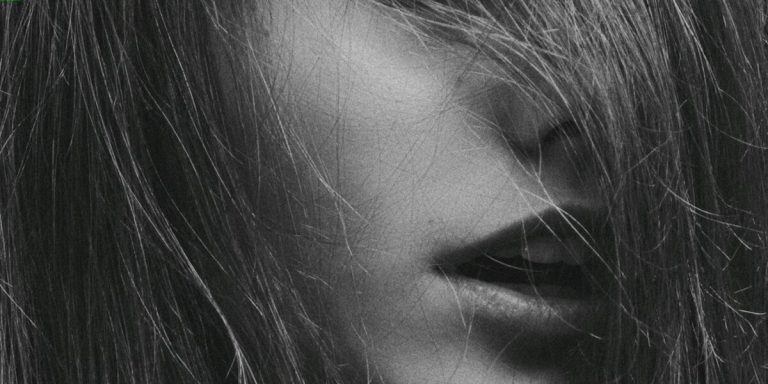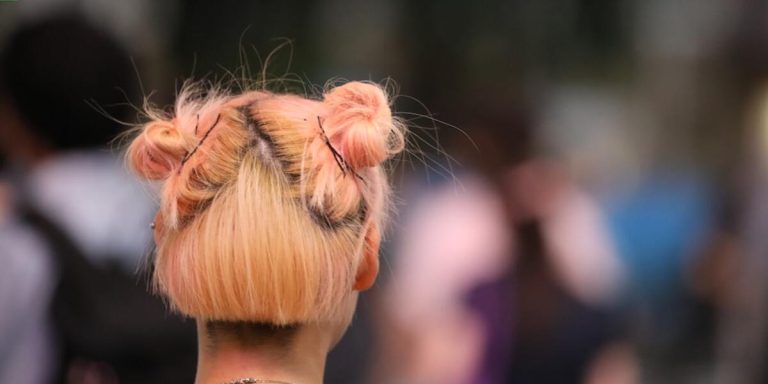Seborrheic Dermatitis Hair Loss Treatment: A Comprehensive Guide for Recovery and Regrowth
Seborrheic dermatitis hair loss treatment is an area that many are seeking further understanding about, given the increasing prevalence of this condition. This problem often begins with a scaly scalp and can quickly progress to noticeable hair thinning or even bald patches in severe cases. Despite its alarming nature, it’s crucial to remember that seborrheic dermatitis isn’t always a permanent sentence for your luscious locks – effective management strategies exist.
Our comprehensive guide aims at comprehensively providing insights into recovery and regrowth methods associated with treating Seborrheic Dermatitis-induced hair fall. We delve into vital themes such as identifying initial symptoms, exploring various professional treatments available today alongside home remedies possiblilities too; all towards encouraging healthier follicle growth after having faced Seborreah Dermatitis-related challenges.
Did you know?
Did you know that seborrheic dermatitis, a common scalp condition characterized by flaky and itchy skin, can actually contribute to hair loss if left untreated? According to the American Hair Loss Association, inflammation caused by severe forms of this condition may lead to damage in hair follicles impeding healthy regrowth.
Understanding Seborrheic Dermatitis and Hair Loss
Seborrheic dermatitis, a common scalp condition, is often overlooked as a cause of hair loss. In essence, it’s an inflammatory skin disorder that mainly affects the sebaceous-gland rich areas of your body such as the face, and indeed- your scalp. It manifests itself through redness, inflammation and dandruff-like scaly patches.
What makes this issue complex is not just managing flaky scalps but also dealing with related hair thinning or shedding.
Seborrheic Dermatitis triggers hair fall primarily through its symptoms. Persistent itching leads to scratching, which then causes temporary but noticeable thinning of scalp hair due to excessive pulling or tugging at the roots. Sufferers may believe they’re losing more strands than usual during daily grooming, but the issue could be more severe, involving an underlying developmental problem that affects healthy growth cycles at the follicles.
Recognizing the Symptoms of Seborrheic Dermatitis
Seborrheic dermatitis, a prevalent skin condition primarily affecting the scalp, may lead to hair loss if left untreated. Therefore it’s essential to recognize its symptoms in time for effective seborrheic dermatitis hair loss treatment.
The first sign of Seborrheic Dermatitis is usually greasy and flaky patches on the scalp with yellow or white scales sticking onto your hair shafts. These patches could be minor irritants at first but can turn into persistent itching over time that often leads you to scratch aggressively resulting in damage and eventual hair fall.
If you start noticing dandruff flakes larger than usual accompanied by a sense of discomfort – take note! This isn’t regular dandruff; instead, it indicates Seborrheic Dermatitis’ onset—an early diagnosis aids immediate commencement of necessary treatments preventing any subsequent adverse effects like thinning hairs or bald spots from appearing prematurely due to continued inflammation or scratching-induced wounds.
The Connection Between Seborrheic Dermatitis and Hair Thinning
When considering the correlation between seborrheic dermatitis and hair thinning, scientific research plays a pivotal role. Seborrheic Dermatitis is an inflammatory skin condition that usually affects the scalp but can also occur in oily parts of the body. Common symptoms include redness, itching, flaking or scaling which may contribute to hair loss.
Seborrhoea doesn’t directly cause hair loss. However, intense scratching due to itchiness or removing scales from your scalp too harshly could lead to some form of temporary hair shedding. Prolonged inflammation might potentially damage the follicle and result in permanent balding if left untreated for long periods.
Identifying this connection early on proves crucial in selecting targeted treatments aimed at not only managing seborrheic dermatitis symptoms but also preventing consequent thinning or loss of strands.
In choosing effective treatment options for “seborrheic dermatitis hair loss,” intervening before significant harm occurs remains vital.
1) Antifungal shampoos: Over-the-counter antifungal shampoos containing ketoconazole are highly recommended by many trichologists today as they lessen yeast growth on your scalp associated with this condition thereby reducing irritation and subsequent scratching which leads to lesser dislodgement of strands.
2) Topical cortisones: Short-term application reduces inflammation rapidly thus decreasing urge-to-scratch episodes while protecting against potential strand weakening from persistent irritation.
Proven Treatment Options for Seborrheic Dermatitis-Induced Hair Loss
Seborrheic dermatitis–a common skin condition affecting the scalp, notorious for causing flaky scales and persistent itchiness. While it isn’t directly linked to hair loss, chronic scratching and inflammation can lead to undesirable hair thinning or loss. Thankfully though, in 2023 there are proven treatment options available that focus on managing seborrheic dermatitis symptoms which consequently help alleviate associated hair loss.
Firstly, medicated shampoos have gained significant popularity due to their effectiveness against seborrheic dermatitis-induced hair fall. These products typically contain active ingredients like ketoconazole or selenium sulfide that combat yeast overgrowth—an underlying cause of this disorder—to promote a healthier scalp environment conducive for natural hair growth.
Secondly, topical cortisone creams offer relief from the incessant itching brought about by Seborrhoeic Dermatitis. By reducing inflammation at its source—the skin’s surface—these creams allow follicles damaged by constant irritation enough respite to recover function and stimulate new growth.
Medical Therapies: Antifungals and Topical Solutions
When it comes to treating seborrheic dermatitis-induced hair loss, medical therapies play a crucial role. Particularly prominent are antifungal treatments and topical solutions — two proven remedies that can efficiently tackle the root cause of this condition.
Antifungal medicines, such as ketoconazole, clotrimazole, and selenium sulfide shampoos, primarily battle seborrheic dermatitis by targeting Malassezia yeasts. These organisms often trigger inflammation in affected individuals.
When integrated into regular hygiene routines, medicated shampoos:
- Combat fungal growth
- Reduce related inflammation
This approach effectively eases symptoms like an itchy scalp or dandruff-like flaking that could worsen hair loss.
On-par with these internal healers stand our external allies – Topical Solutions such as corticosteroid lotions designed specifically to alleviate your exterior discomforts caused by inflamed patches on your scalp resulted from severe cases of Seborrhoea Dermatitis.
Natural Remedies: Diet Changes and Scalp Treatments
Seborrheic dermatitis, a common scalp condition known to cause hair loss, can be intimidating. However, with the right combination of natural remedies and lifestyle changes; you have effective options for combating this issue.
To alleviate hair loss caused by seborrheic dermatitis, start with dietary modifications. Include foods rich in antioxidants and anti-inflammatory properties to promote healthy skin and follicle growth, which can help manage this condition.
1) Omega-3 Fatty Acids: Foods like walnuts, flaxseeds, salmon are packed with omega-3 fatty acids which help reduce inflammation associated with seborrheic dermatitis.
2) Vitamins A & D: Carrots or sweet potatoes deliver vitamin A required for repairing damaged skin cells while dairy products provide sufficient Vitamin D stimulating new follicles.
Natural topical solutions provide relief from symptoms associated with persistent seborrheic dermatitis hair loss treatment. Proven applications include:
1) Apple Cider Vinegar Rinse: Its antifungal characteristics keep yeast causing Seborrhoea at bay helping soothe an inflamed scalp – Mix equal parts apple cider vinegar and water then rinse it thoroughly post shampooing.
2) Tea Tree Oil Application — This essential oil’s antimicrobial quality reduces fungus build-up on the scalp improving overall conditions notably after weekly application when blended into a carrier oil like jojoba or coconut.
Maintaining Healthy Scalp to Prevent Future Hair Loss from Seborrheic Dermatitis
Seborrheic Dermatitis is a stubborn scalp issue that many people battle with, and it can indirectly lead to hair loss over time. However, the silver lining is that seborrheic dermatitis itself doesn’t cause hair loss; rather, it’s the inflammation and scratching due to itching which harm your precious follicles causing them to fall out prematurely. If you’re dealing with this condition in 2023, fret not because advanced treatments have emerged effective in handling both issues at once.
Managing Seboherric Dermatitis starts by maintaining a healthy scalp environment since an agitated or inflamed scalp can exacerbate the symptoms leading to more irritation and inevitable damage on your locks. Embrace shampoos specially formulated for this specific skin disorder as they contain active ingredients such as pyrithione zinc or ketoconazole designed specifically against yeast-like fungus often linked with Seborrhoea.
With consistent use of these treatment products, you should see effective results within weeks: reduction of flaky scales on your head and soothing relief from constant itchiness are usually visible signs of improvement. Coupled with gentle brushing techniques using tools suitable for sensitive scalps could also lessen any extra strain exerted onto weakened hair roots thereby fighting premature shedding from its roots up.
Importance of Regular Scalp Hygiene
Taking regular care of your scalp is an integral part of preventing hair loss caused by Seborrheic Dermatitis. A clean and healthy scalp plays a pivotal role in maintaining strong, radiant hair.
Seborrheic dermatitis, a common skin condition that mainly affects the scalp, can cause stubborn dandruff along with redness and itching. While this isn’t directly linked to permanent balding or thinning, scratching at itchy areas might lead to temporary hair shedding if not appropriately addressed.
Clients at Soulphany often adopt these four helpful habits when treating seborrheic dermatitis and hair loss:
1) Regularly Cleaning The Scalp: Avoid letting oil and dead skin cells build-up on the scalp which make excellent breeding grounds for Malassezia yeast – contributing factor towards seborherric dermatitis conditions. Use mild shampoos suitable for frequent washes.
2) Using Medicated Shampoos: When dealing with active sebhorreric flare-ups consider using medicated shampoos specifically formulated containing ingredients like ketoconazole or pyrithione zinc.
Stress Management Techniques to Reduce Flare-Ups
Managing stress plays a pivotal role in controlling flare-ups of seborrheic dermatitis, which can lead to hair loss if unchecked. Incorporate these proven techniques into your regular routine:
1. Regular Exercise: Physical activity is renowned for reducing stress levels and promoting overall wellness. Incorporating moderate exercise such as walking or yoga into your daily schedule will help keep your stress under control.
2. Mindful Meditation: This technique involves focusing on the present moment and accepting it without judgment. By practicing mindful meditation regularly, you can reduce anxiety symptoms often associated with seborrheic dermatitis.
3. Balanced Diet: Consuming nutrient-rich foods boosts overall health while providing necessary vitamins for scalp health and hair growth.
6– Professional Help : If dealing with ongoing high-stress situations , consider seeking professional counselling . A mental health expert may provide more customized strategies tailored towards personal triggers .
Conclusion
Wrapping up, it is evident that seborrheic dermatitis hair loss treatment isn’t as imposing or murky a subject as you may have initially thought. The journey towards recovery and regrowth demands persistence – but with the right information at your fingertips, the way forward can be less daunting than one might assume.
Don’t let your follicular woes overwhelm you anymore! There’s an entire world of potential solutions out there to explore which could pave the path for bringing back those luscious locks. Our website offers more detailed resources and articles on various hair loss treatments.
We invite you to dive deeper into this ocean of knowledge – because when it comes to combating hair loss, understanding is half the battle won!







